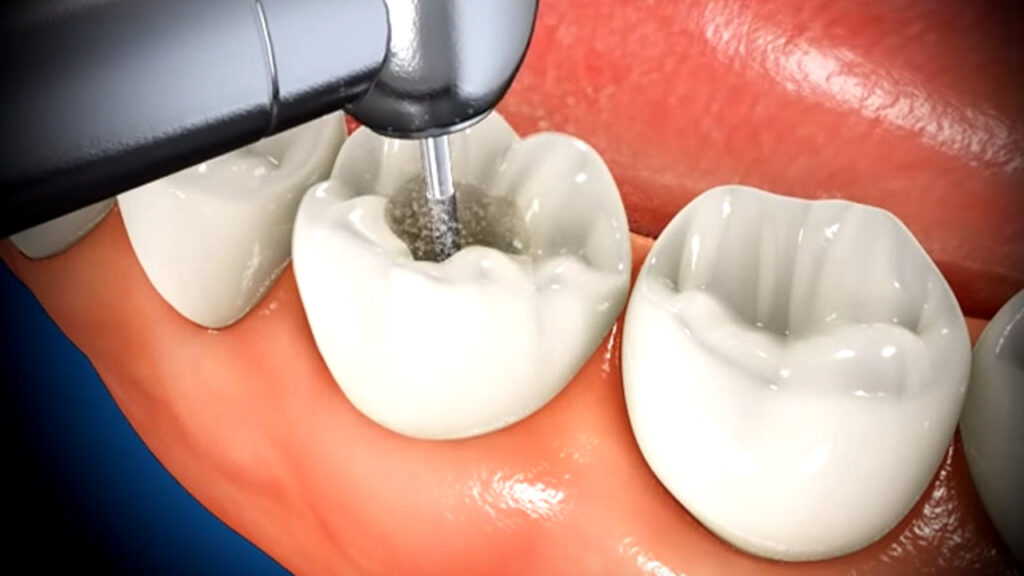When it comes to dental procedures, people often confuse several terminologies. One of them is the difference between root canal therapy and root canal. This confusion may be due to the interchangeability of terms used by most people. In this blog post will help dispel the confusion by explaining what distinguishes root canal therapy from root canal.
Root Canal
The primary difference is that “root canal” is an anatomic term and “root canal therapy” is the treatment the dentist does inside the root canal. A “root canal” is the anatomic term used to name the tube system inside the root of the tooth. The tube inside the root is also called a “canal”. Since the canal is inside the root, the canal system is called the root canal. The tube system is normally filled with live tissue including arteries, veins, and nerves. When bacteria/germs get inside the tube system, they inflame the tissue, they eventually kill the tissue, and take over the tube system.
A root canal is an essential treatment that eliminates the infection or inflammation in the pulp chamber, where the tooth’s nerve lies. In other words, “root canal therapy” is the technically correct terminology for the common phrase used by the general public “root canal”. Although the two terminologies are not synonymous, they frequently are used synonymously in common dental conversations.
During the root canal procedure, endodontic specialists create an opening on the tooth’s chewing surface to reach the pulp canals (root canals). They then remove the infected or inflamed pulp and clean the inside of the tooth to remove any bacteria, debris or dead tissue, and close with a rubber-like filling material. The endodontist may also recommend a crown over the tooth to protect it and restore its function. The endodontist does the root canal, the restorative dentist does the restoration of the tooth.
Most people and many dentists use the term “Root Canal” as a simple common term to describe the process of “Root Canal Therapy” which is the treatment to eliminate inflamed tissue and bacteria in the root tube system.
Root Canal Therapy
Root Canal Therapy is the treatment which removes inflammation and bacteria inside the tube system of the root. There are 2 types of therapy, Non-surgical and Surgical Root Canal Therapy. Non-surgical Root Canal Therapy is the most common type of root canal therapy. It is performed through the crown of the tooth. It is done with files, and antibacterial disinfectant solution to clean and disinfect the tube/canal system. The tube/canal system is then filled with a rubber gutta-percha filling to plug up the canal system and prevent bacteria from coming out of the root tip which would infect the bone. Occasionally bacteria will still leak out of the root tip after non-surgical root canal therapy. When that happens Surgical Root Canal Therapy may be necessary. Surgical Root Canal Therapy involves removal of the root tip. Then the remaining root end is filled with a ceramic filling to stop bacterial leakage out of the root.
The full range of root canal therapies are available from the best endodontists when your tooth’s pulp is inflamed or infected. General dentists and some endodontists do not have the full range of expertise, materials, and instruments to properly manage teeth which need root canal therapy. The pulp is the soft tissue inside your teeth that contains nerves and blood vessels that help keep them alive. A severe cavity, crack, chip, or trauma can damage the pulp as bacteria enter the root canal system. Root canal therapy aims to salvage the tooth by removing the infected or inflamed pulp, cleaning and shaping the root canal, and sealing it with a filling or a crown to prevent bacterial invasion.
The root canal therapy procedure is quite complex. Usually, it can be completed is a single appointment by and endodontist, but it can also take several visits to complete successfully. Suppose you have a damaged tooth and experience symptoms such as severe toothache, sensitivity to hot or cold food, swollen gums, or bad breath. In that case, you should visit your endodontic specialist immediately for examination and diagnosis. They may recommend a root canal therapy procedure, which is safe and effective in saving your natural tooth.
Benefits of Root Canal Therapy
Root canal therapy is a beneficial procedure that enables you to save your natural tooth, which is always the best option. Additionally, many people avoid root canal therapy due to the misconception of pain, which is not necessarily true. Root canal therapy is generally a painless procedure. The most caring endodontists will be certain you have complete, profound anesthesia before starting the therapy. Other benefits of root canal therapy include:
- Improved oral health
- Long-lasting results
- Improved aesthetics because you get to keep your original tooth.
- Prevents the spread of the infection.
Conclusion:
Root canal therapy is an endodontic procedure that aims to save natural teeth by removing infected or inflamed pulp, cleaning and shaping the root canal, and sealing it with a rubber filling inside the tube system of the root. It is a safe and effective procedure that many people avoid due to common misconceptions. Therefore, if you have a damaged tooth and experience symptoms, visit your endodontic specialist for diagnosis and treatment options.

